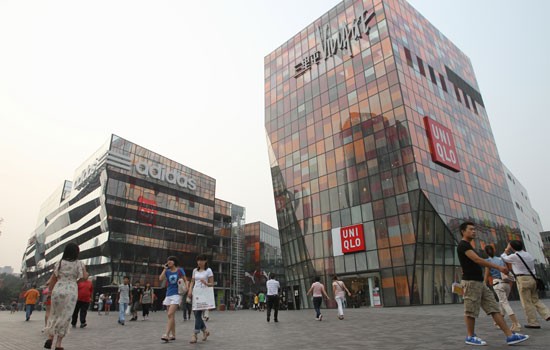
Beijing's rate of vacancy in its main retail market was at four per cent at the end of 2013.
The steady demand for retail spaces in choice spots in the city was seen in numerous tenant changes in developed shopping centers and in the high rates of occupancy in newly opened shopping centers during 2013.
Down by 1.3 per cent from the previous quarter's rate, the yearend rate is the second to the lowest vacancy rate of the city since the first quarter of 2000, according to a report released Thursday by Jones Lang La Salle, an international real estate investment management firm.
Most of the new retail businesses that leased new properties in 2013 belonged to the fashion sector. The number of rentals from the food and beverage and entertainment sectors also continued to increase all year round. Continued growth in rental most specifically in Beijing's central market is an outcome of the decline in leased property stocks.
Owners of shopping complexes used different innovative strategies to ensure that they have a good mix of tenants in their property in response to the increasing rivalry posed by businesses engaged in e-commerce, the report said. Increased rivalry with e-commerce businesses and the declining demand from high end retailers made shopping center owners develop schemes to explore other commercial uses for their retail spaces, according to Alice Law, retail leasing head of Jones Lang La Salle, Beijing.
This trend will see the reduction in the number of retail spaces in certain areas and will provide a boost to growth in rentals. Law added that the demand for leasing will remain favorable in 2014 and that a problem of overage of leased spaces in Beijing is not bound to happen.



























